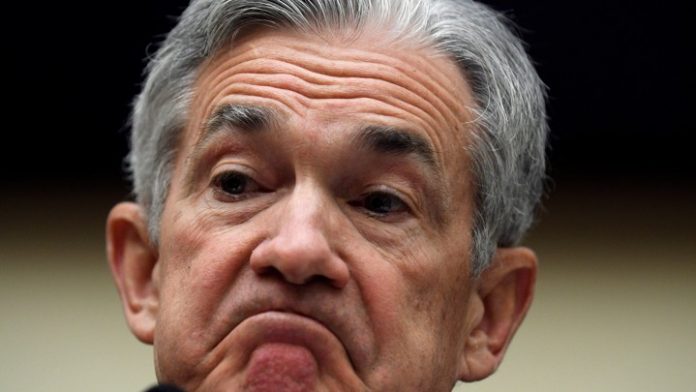Stocks are flat this morning as bulls attempt to avoid another sell-off. The Nasdaq Composite is up while the Dow and S&P trade at small losses.
The rally needs more strong outings to stay alive following yesterday’s burst. Today could mark a potential turning point for the market with coronavirus cases spiking as the U.S. continues to reopen.
And as of midday, it looks like stocks are topping out. Again.
A failure to punch higher from here is likely to treat investors to another quick plunge, not all too different from the one they had to endure last Thursday when the S&P got crunched for a 5.75% daily loss.
The usual suspects – airlines, cruise operators, and retailers – are leading the market lower. Stocks surged yesterday on these very same companies following the release of a blockbuster May retail sales report. The U.S. government claimed that retail sales increased a whopping 17.7% last month, which sent bulls into a frenzy.
But in addition to being an impressive display of consumer resilience, it was further proof of how powerful headlines have become over the last month. Investors have fully subscribed to a “buy the news” strategy provided that it has something to do with additional economic stimulus.
“The market sure seems to be favoring the good news over bad these days, and supportive measures like FOMC bond buying, COV19 vaccine hopes and optimism on a V-shaped economic rebound seem to be getting a lot more traction than rising COVID rates in South/West,” Mark Newton, managing member at Newton Advisors, wrote.
Shifting matters even more bullish was a rumored $1 trillion Trump infrastructure bill, which the White House plans on debuting sometime in the near future according to Bloomberg News.
With so many external forces prodding equities higher, it’s no wonder that stocks came roaring back after last week’s collapse.
“It’s hard to keep a ‘well supported’ stock market down,” Jim Paulsen, chief investment strategist at the Leuthold Group, explained.
“Against a backdrop of widespread caution after a swift 7% decline in the recent days, the stock market was simultaneously bombarded by major pillars of support.”
Now, however, it seems investors are growing weary of all the stimulus. But that hasn’t stopped the Fed from pledging to provide even more. The central bank is already planning on buying individual corporate bonds “as needed” according to Chairman Jerome Powell.
Next, Powell & Co. might even target stocks.
Skeptical traders have accused the Fed of secretly buying stocks for more than a decade, now, with little-to-no proof of it actually happening. If the market drops again, though, Powell might have to come clean and officially announce that equities need a stock-buying program to stave off another crash.
And it’s all because the U.S.’s financial structure needs a rising market to function.
Depressingly enough, the Fed’s continued support of equities in recent years has gotten institutions addicted to stocks. Low-risk, high-yield Treasuries are not nearly as attractive as they used to be with a Fed-sponsored market. Stocks have almost completely supplanted Treasuries in large-scale portfolios as a result.
Sadly, those institutions got whacked in the Covid-19 bear market. U.S. public pension funds, for example, collectively lost $1 trillion at the market’s March lows.
With the help of the Fed, they have since recovered, narrowly escaping insolvency. Another correction would likely be disastrous in that regard.
And if things get bad enough, don’t be surprised to see Powell announce a Fed stock purchasing plan. In fact, it wouldn’t even be the first central bank to engage in the practice of doing so.
The Swiss National Bank has been buying equity in U.S. companies for years. The Bank of Japan does it, too. Currently, roughly 80% of Japan’s ETFs are owned by its central bank.
Shocked?
Don’t be.
It’s the “new normal” of investing, and an inescapable, “damned if you do, damned if you don’t” dilemma for the Fed.
One that could result in a rapid stock collapse – equal parts impressive and terrifying – should investors give up on the current recovery.








